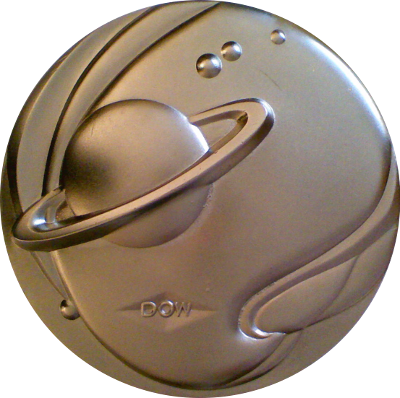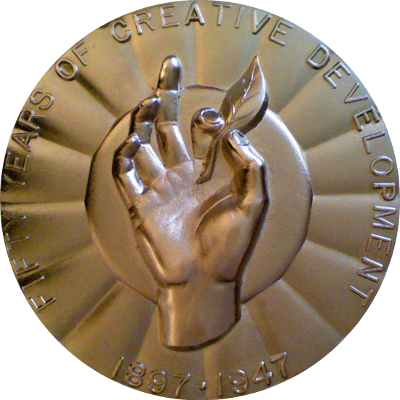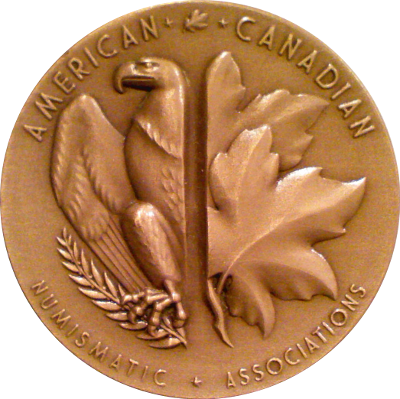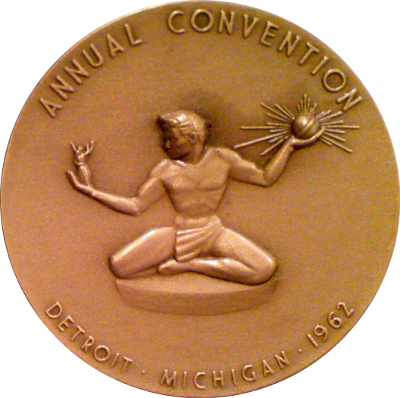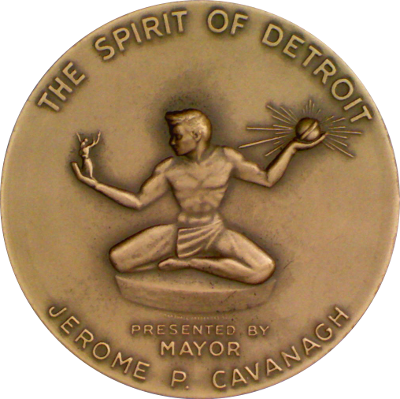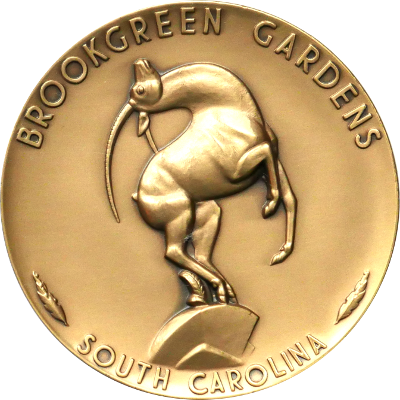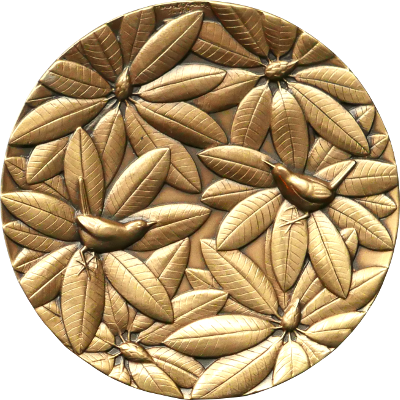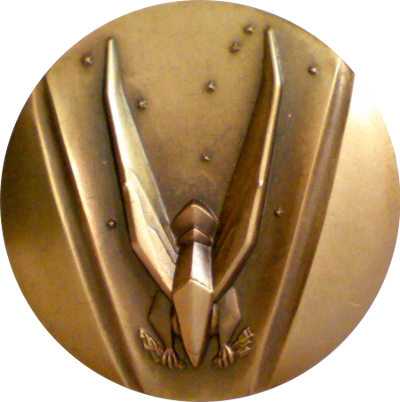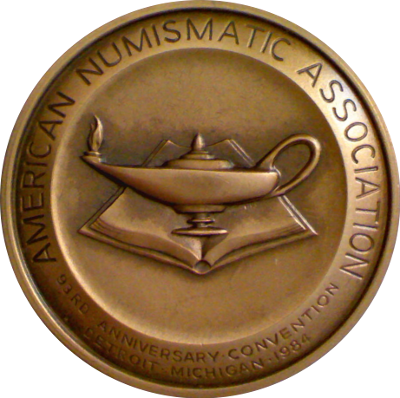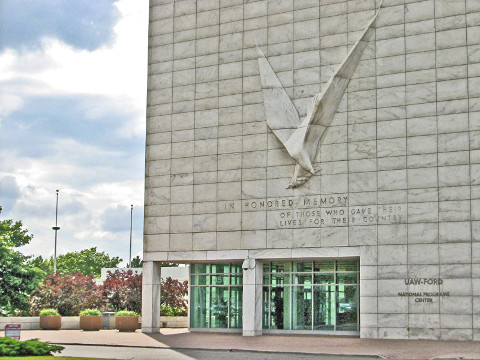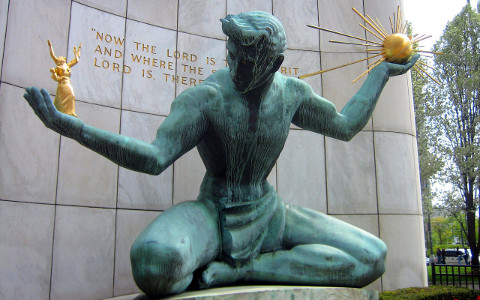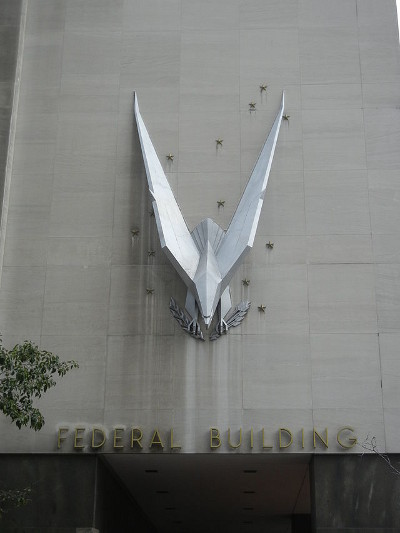Marshall Maynard Fredericks was born of Scandinavian heritage in Rock Island, Illinois on January 31, 1908. His family moved to Florida for a short time and then settled in Cleveland, Ohio, where he grew up. He graduated from the Cleveland School of Art in 1930 and journeyed abroad on a fellowship to study with Carl Milles (1875–1955) in Sweden. After some months he studied in other academies and private studios in Denmark, Germany, France, and Italy, and traveled extensively in Europe and North Africa.
In 1932, he was invited by Carl Milles to join the staffs of Cranbrook Academy of Art and Cranbrook and Kingswood School in Bloomfield Hills, Michigan, teaching there until the bombing of Pearl Harbor made him enlist in the armed forces in 1942. Originally, Fredericks joined the Army Corps of Engineers where he served as the training officer for an engineer camouflage unit. Members of this unit trained to go overseas to camouflage airstrips and air installations. It is during this time in Tucson, Arizona that Fredericks met his wife Rosalind, who was driving a reconnaissance vehicle for the Army Air Force.
Fredericks developed two new types of target charts while in Tucson, one visual and one radar-related for high altitude bombers. These inventions led to Fredericks transfer to the Army Air Force. His work with these target charts and a camera which he created allowed the military to perform operations which they previously had been unable to perform. As a result, the Air Force sent Fredericks to India and the Far East, including China, the Philippines, and Okinawa. According to Fredericks his "target charts and simulated radarscopes were used throughout the whole Japanese war and were very valuable ... to the outcome of the conflict." During his time in the military, Fredericks attained the rank of Lieutenant Colonel in the Air Force. He was honorably discharged from service in 1945 and returned home to Michigan to continue working as a sculptor.
In 1936, Fredericks won a competition to create the Levi L. Barbour Memorial Fountain on Belle Isle in Detroit, Michigan. This was to be the first of many public monuments created by Fredericks. After World War II, the sculptor worked continuously on his numerous commissions for fountains, memorials, free-standing sculptures, reliefs, and portraits in bronze and other materials. Many of his works have spiritual intensity, lighthearted humor and a warm and gentle humanist spirit like that found in Fredericks himself.
Fredericks was the recipient of many American and foreign awards and decorations for his artistic and humanitarian achievements. He exhibited his work nationally and internationally and many of his works are in national, civic, and private collections. In 1957, he was elected into the National Academy of Design as an Associate member, and became a full Academician in 1961.
He resided in Birmingham, Michigan with his wife Rosalind Cooke until his death April 4, 1998. The couple had five children and eight grandchildren. He maintained studios at 4113 North Woodward Avenue in Royal Oak and on East Long Lake Road in Bloomfield Hills until his death. His estate donated the contents of both studios to the Marshall M. Fredericks Sculpture Museum on the campus of Saginaw Valley State University in Saginaw, Michigan.
Sourced mainly from Wikipedia and the M. Fredericks Sclpture Museum.

